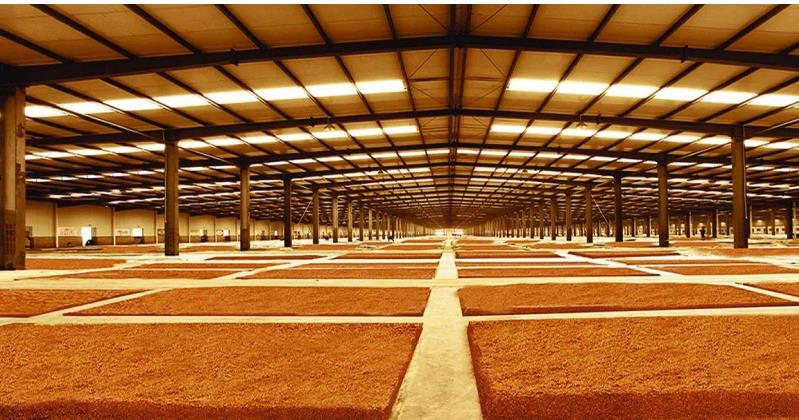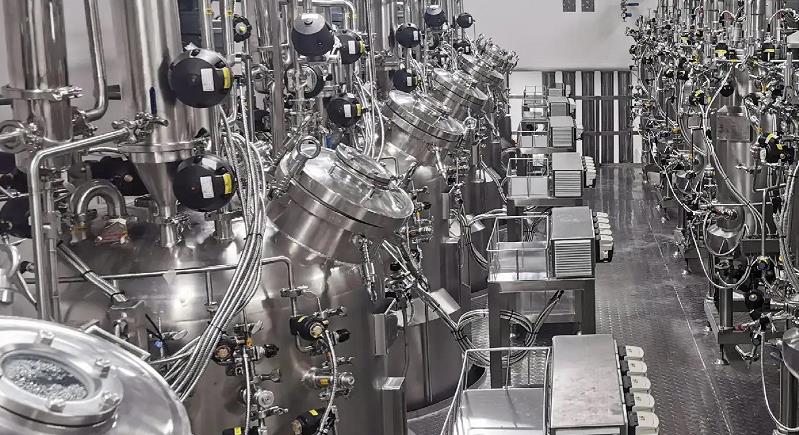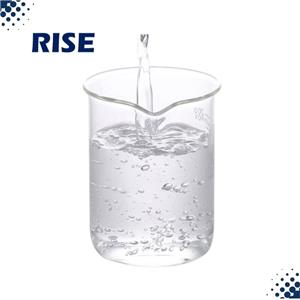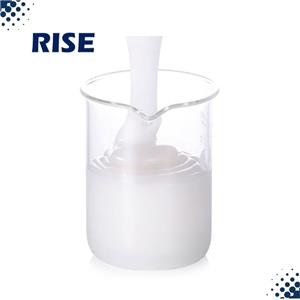Do you know anything about fermentation defoamer?
Aerobic biological fermentation process is mostly accompanied by aeration. The combination of the injected air and the surfactant in the culture medium often leads to the generation of foam, which is difficult to burst. In the process of biological fermentation, the production of foam will cause the loss of fermentation products, bacterial contamination, pollution of sensors, reduction of working volume and environmental pollution. Therefore, it is extremely important to eliminate the redundant foam in the fermentation process.

1、 Common defoaming methods
*Physical defoaming method:
Physical defoaming methods include high and low temperature defoaming, acoustic defoaming and liquid spraying defoaming. High and low temperature defoaming is to use the instability of foam under high or low temperature conditions to achieve the purpose of defoaming. Acoustic defoaming refers to the use of sound waves to vibrate the material molecules in foam, plus the sound pressure effect of sound waves on the foam surface to break the foam. It can be divided into mechanical acoustic defoaming and ultrasonic defoaming.
Liquid spray defoaming is to use the impact of liquid on the foam surface to break the foam. Physical defoaming method has no influence on fermentation process and products, and can be used as an ideal alternative to chemical defoamer. However, the physical defoaming method is either expensive or inefficient, so it has not been widely used.
*Mechanical defoaming method:
The defoaming mechanism of the mechanical defoamer mainly uses the pressure change, shear force, compression force and impact force generated by the rapid rotation of the impeller to achieve the purpose of defoaming. According to the research on mechanical defoamers at home and abroad, mechanical defoamers can be divided into four types, namely, centrifugal basket type defoamer, rotary shaft paddle type defoamer, upper impeller stirring type defoamer and cone type defoamer.
*Chemical defoaming method:
Chemical methods mainly use various chemical or biological defoamers to eliminate surfactants to achieve the purpose of defoaming. Its mechanism mainly includes: defoamer reduces the mechanical strength of foam and the viscosity of liquid film surface at the same time. The interaction of the two aspects, together with some other relatively small factors, can eliminate foam. This method is relatively simple and convenient, with a wide range of defoamers and high defoaming efficiency. It is the most widely used defoaming method at present.

2、 Common defoamers for fermentation
*Silicon defoamer:
The silicone defoamer is made of silicone grease, emulsifier, waterproof agent, thickener, etc., and a proper amount of water through mechanical emulsification. Silicone defoamer is characterized by low surface tension, high surface activity, strong defoaming force, low dosage and low cost. Organic silicon defoamer is not miscible with water and most organic substances, and can defoamer most bubble media. The silicone defoamer has good thermal stability and can be used in a wide temperature range of 5 ℃ - 150 ℃; Organic silicon defoamer has good chemical stability and is difficult to react with other substances. It can be used in acid, alkali and salt solutions as long as it is properly configured, without damaging product quality.
*Polyether defoamer:
There are many kinds of polyether defoamers, mainly including the following:
① GP type polyether defoamer: The GP type defoamer, which is prepared by addition polymerization of epoxy propane, or the mixture of epoxy ethane and epoxy propane with glycerol as the starting agent, has poor hydrophilicity and low solubility in the foaming medium, so it should be used in the thin fermentation broth. Its foam inhibiting ability is superior to defoaming ability, and it is suitable to be added in the basic medium to inhibit the production of foam in the whole fermentation process.
② GPE type polyether defoamer, namely foam enemy, is added to the end of the chain link of the polypropylene glycol of the GP type defoamer to form ethylene oxide, which becomes polyoxyethylene oxypropylene glycerol with hydrophilic group at the chain end. According to the ethylene oxide addition amount of 10%, 20% and 50%, they are called GPE10, GPE20 and. GPE50 respectively.
GPE type polyether defoamer has good hydrophilicity, is easy to spread in the foaming medium, and has strong defoaming ability, but also has large solubility and short defoaming activity maintenance time, so it has good effect when used in viscous fermentation broth.
③ GPES type polyether defoamer: there is a new type of polyether defoamer. The chain end of GPE type defoamer is sealed with hydrophobic stearate to form a block copolymer with hydrophobic chains at both ends and hydrophilic chains at intervals. The molecules with this structure are easy to gather at the gas-liquid interface in a horizontal manner, so the surface activity is strong and the defoaming efficiency is high.
*Polyether modified silicon defoamer:
Polyether modified silicon defoamer combines the advantages of polyether and organic silicon defoamer. It is non-toxic and harmless, harmless to bacteria, and has very little added amount. It is a high cost performance defoamer product.
3、 Selection requirements of fermentation antifoam
Industrial fermentation defoamers generally need to meet the following four requirements:
① The fermentation defoamer must be a strong surfactant with low surface tension and be able to immerse and expand on the foam membrane;
② The industrial fermentation defoamer has good dispersibility, has certain affinity to the fermentation broth, can be quickly dispersed in the fermentation broth, and plays a role in foam;
③ Defoamers have little or no effect on cell growth, target product synthesis and extraction;
④ The fermentation antifoam is insoluble or insoluble, has low volatility, and has lasting defoaming and foam inhibition properties.




